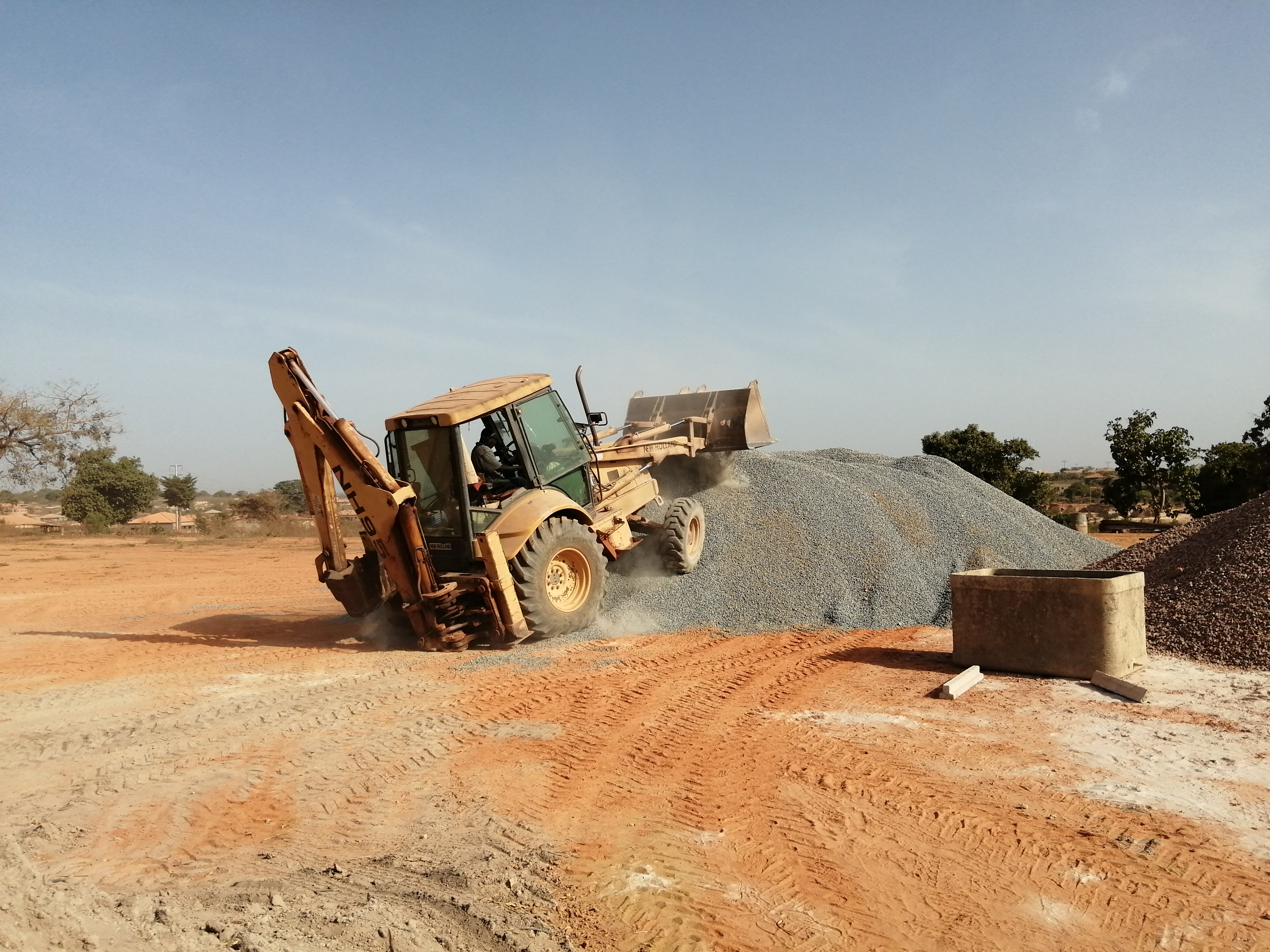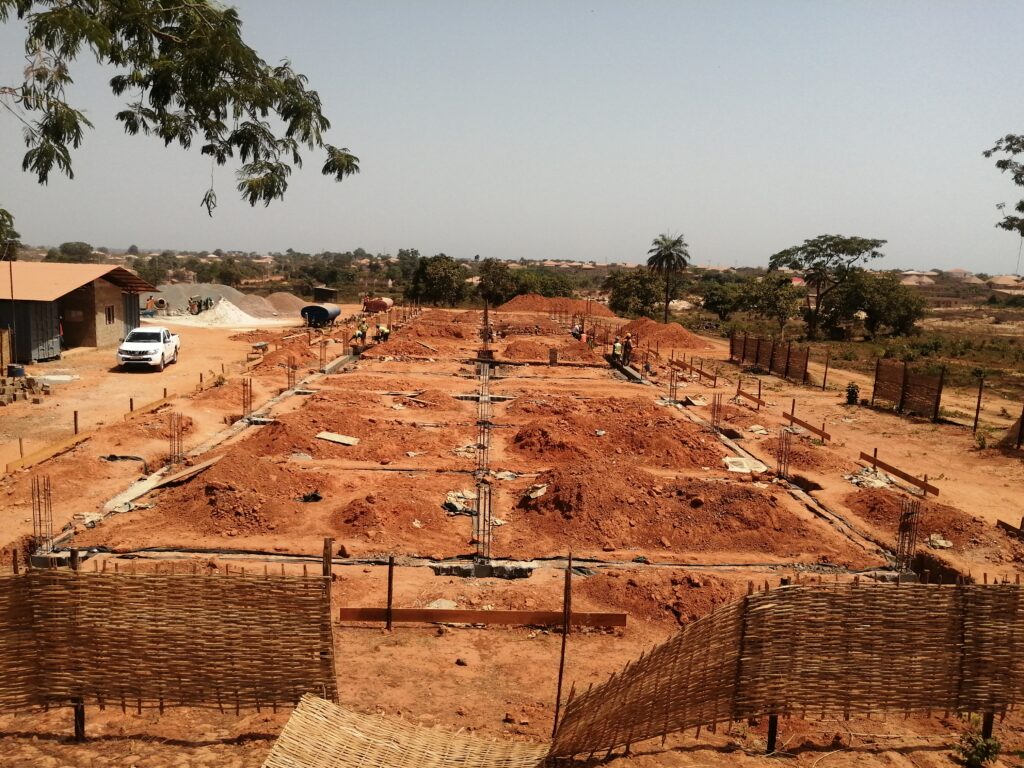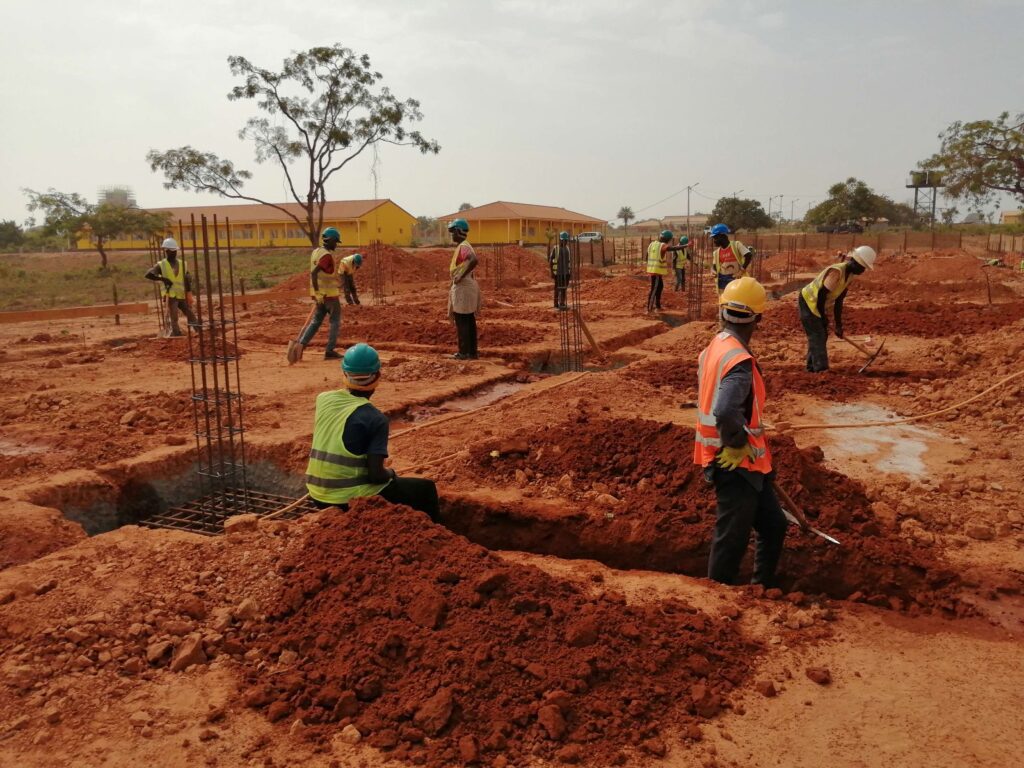Earlier this year, we broke ground on a brand-new 16,000-square-foot Training Center at our flagship campus in the capital of Guinea-Bissau. It’s scheduled to be completed by early next year. The Training Center will allow us to expand our welding program and launch new programs in carpentry and metalwork machining – skills that are in high demand in Guinea-Bissau’s economy.
This is the largest infrastructure project WAVS has ever undertaken – by far! And it’s been a long journey just to get to this point.
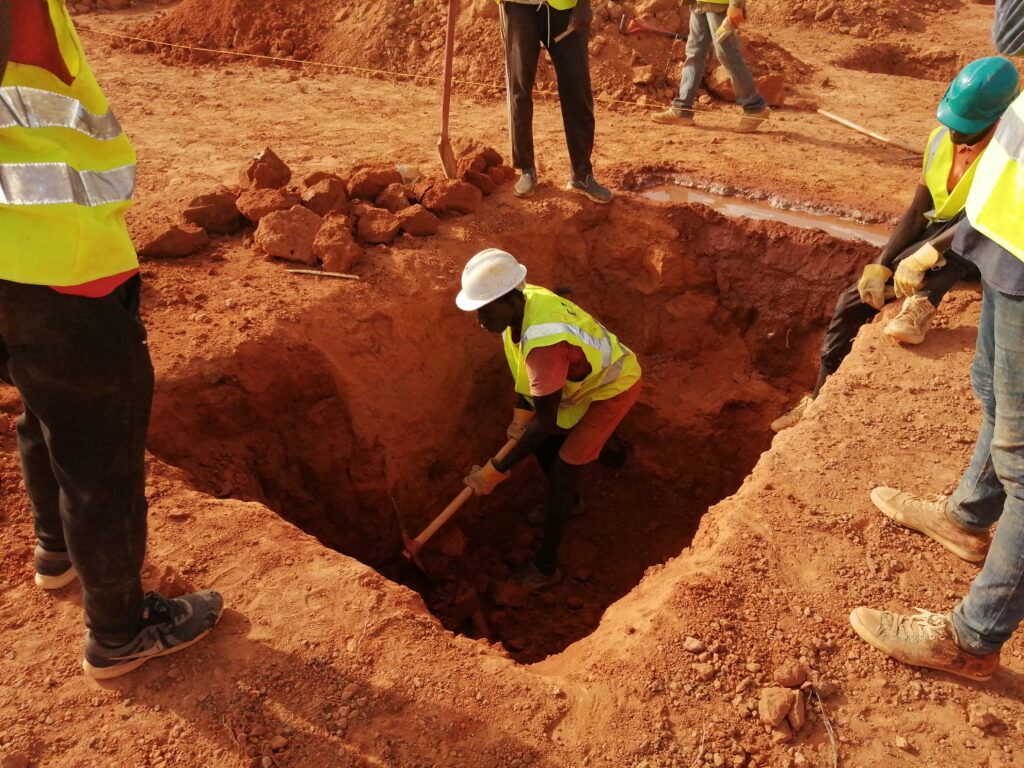
So to sum it up, here are the ten “easy” steps to build a 16,000-square-foot school building in West Africa
- Dream up the vision for the new Training Center and collaborate with vocational training experts to map out the basic design for the building. (We worked with a Michigan-based nonprofit called Vocational Education Support Africa, or VESA, which provided its services for free).
- Work with an architectural firm to design the building and produce schematics. (We hired Halajian Architects, based in Clovis, California).
- Hire an engineering firm to produce construction drawings for the building. (We worked with Halyard, an engineering firm based in Toronto that has experience with designing projects in Guinea-Bissau).
- Hire a local site surveyor to map out the property and develop a plan for grading and leveling the construction site.
- Put the grading work out to bid, and hire the winning company. (And there were only a few companies in Guinea-Bissau that had the heavy machinery to do this work).
- Get our designs approved by Bissau City Hall, and secure a construction permit.
- Hire staff to manage the construction project (including a local engineer).
- Develop a detailed bidding package, including final construction drawings, a proposed contract, a “scope of work” document outlining the specifics of the project, and a “bill of quantities” which lists every item and type of material that will be used in the construction project.
- Put the project out to bid and hire the winning bidder. (In our case, the local contractor was selected in January and work began later that month).
- Then kick back and relax while the contractor does all the work … (OK, just kidding! There’s actually another long list of things to work on now that the contractor has broken ground, but this list is already long enough and you get the idea.)
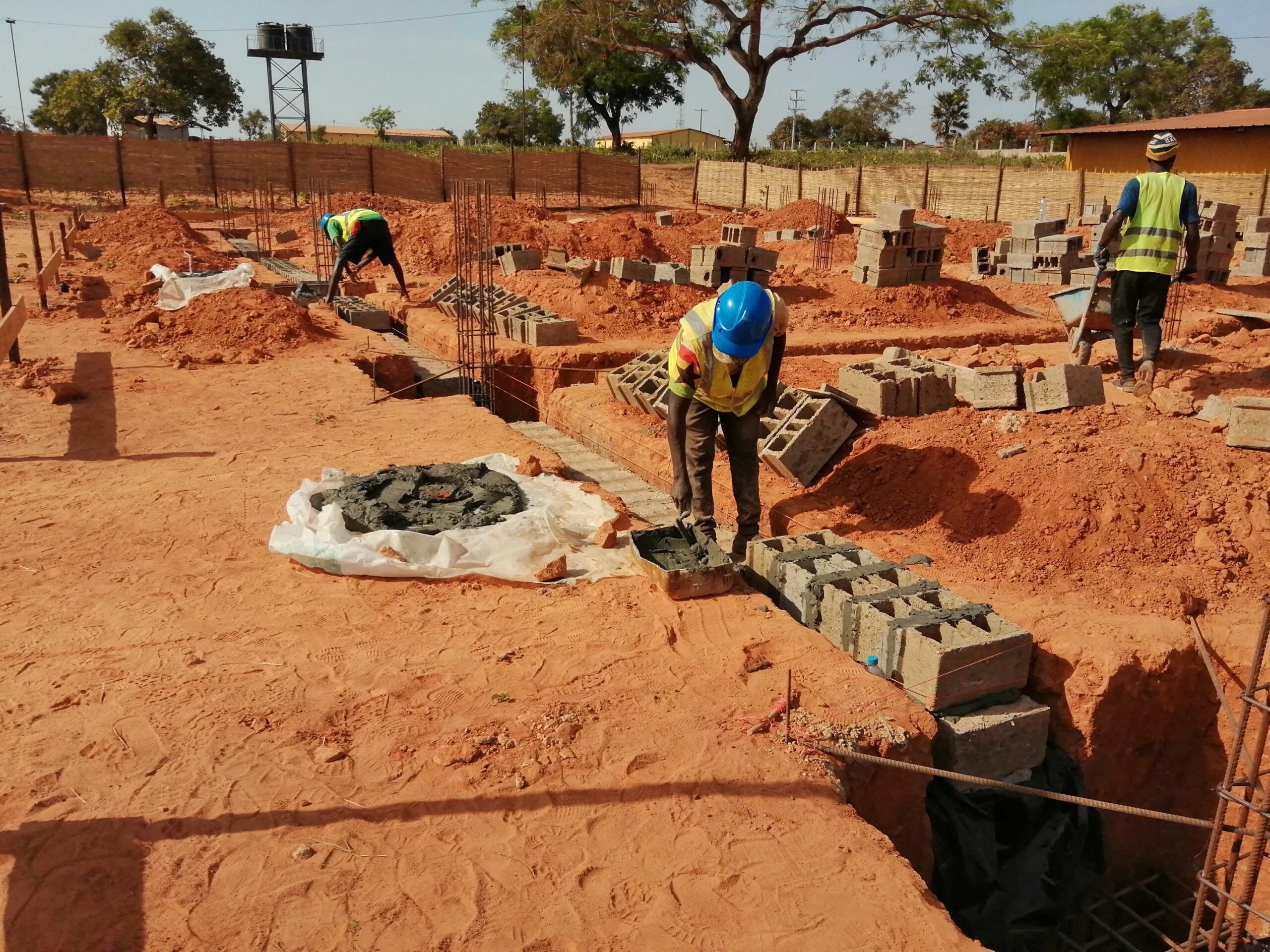
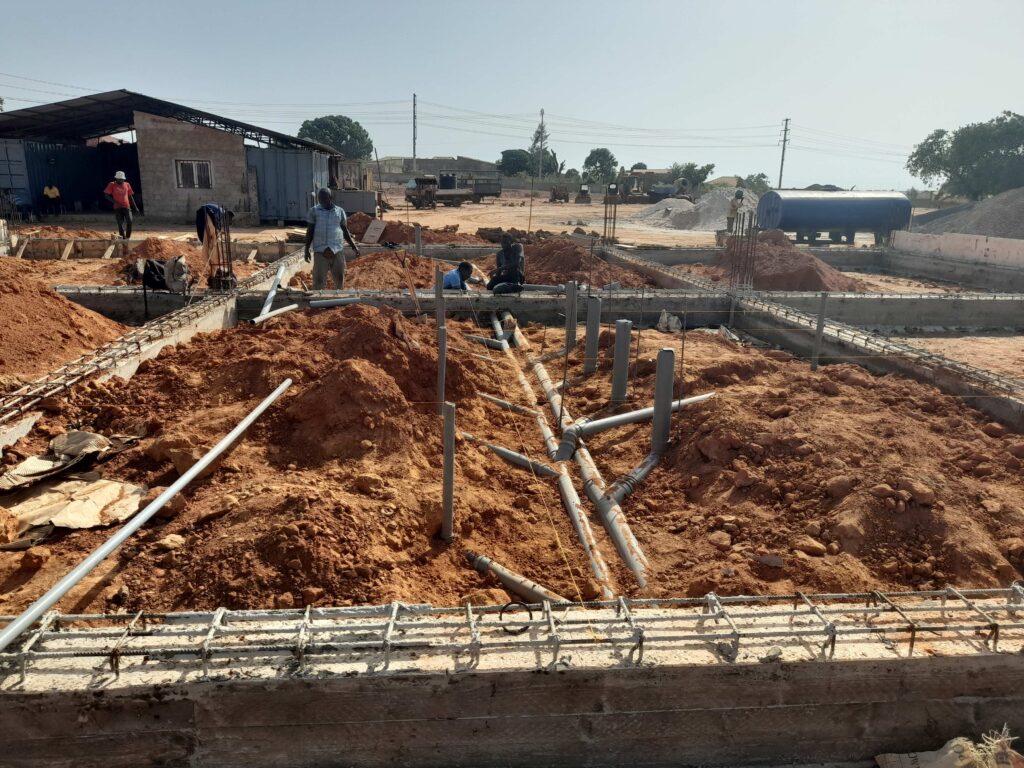
Our construction management team and our contractor have been working hard to complete this project by the end of the year. As you can see in the photos, we’re constructing a sturdy foundation in line with North American construction standards.
We’re building this Training Center knowing that this facility will serve thousands of students over the coming decades! But to do things right, it takes a lot of work. The good news is that the foundation is nearly complete. Soon, we’ll pour the slab and then start the blockwork on the walls. We’ve also already laid down the plumbing and electrical connections below the slab.
To get an idea of what the building will look like once it’s complete, take a look at this 3D walkthrough.
Once the Training Center is complete, we’ll be able to expand our existing welding training program and add new programs in machining and carpentry. To learn how you can help us launch these new programs, click here.
We greatly appreciate all of you who have supported this vision over the years. The future leaders of Guinea-Bissau thank you!
